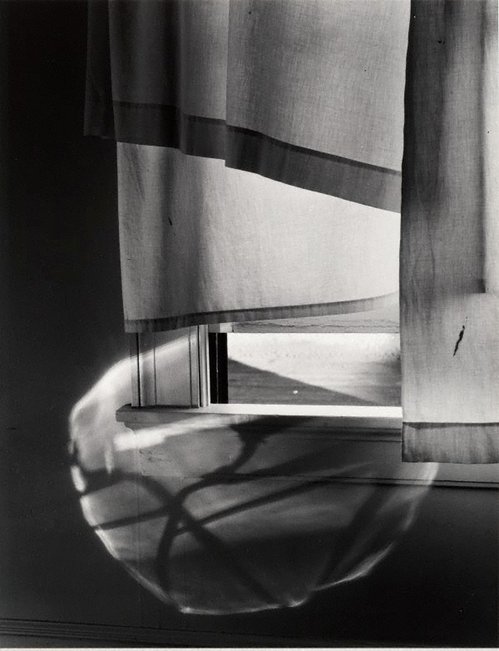-
Details
- Other Title
- Two barns and shadow, in the vicinity of Naples and Dansville, New York
- Alternative title
- Two barns and cross, vicinity of Dansville, New York
- Date
- 1955
- Media category
- Photograph
- Materials used
- gelatin silver photograph mounted on card
- Dimensions
- 17.5 x 23.5 cm image/sheet
- Signature & date
Not signed. Not dated.
- Credit
- Gift of Patsy Asch 2005
- Location
- Not on display
- Accession number
- 117.2005
- Copyright
- Reproduced with permission of the Minor White Archive, Princeton University Art Museum. © Trustees of Princeton University.
- Artist information
-
Minor White
Works in the collection
- Share
-
-
About
Minor White's prestigious photographic career had a major impact on the development of photography in post war America. White believed in the spiritual qualities of photography; oriental philosophy, Zen, Gestalt psychology and the work of G. I. Gurdjieff were all to be important influences on his life and work. He spent much of his life promoting the work of others and, most importantly, advancing the notion of photography as art. White believed that photography should be akin to poetry: intensely personal and condensed moments of consequence.
White graduated with a degree in botany from the University of Minnesota in 1933 and became an active member of the Oregon Camera Club. His first solo exhibition was held at the Portland Art Museum in 1942. After being discharged from the United States Army Intelligence Corps in 1945 White moved to New York City where he studied aesthetics at Columbia University. During this time he worked for Beaumont and Nancy Newhall, met Alfred Stieglitz, Edward Weston and Paul Strand and worked as a photographer for the Museum of Modern Art. In 1946 he began teaching at the California School of Fine Arts which was supervised by Ansel Adams.
In 1952, White, Adams, Dorothea Lange, the Newhalls, Barbara Morgan and others established the influential 'Aperture' quarterly, which he edited. After organising the exhibition 'How to Read a Photograph' at the San Francisco Museum of Art, White began work as a curator at George Eastman House in Rochester where he remained for four years, curating exhibitions and editing 'Image Magazine'. In 1956 he began work at the Rochester Institute of Technology and started the significant and influential workshops which he would continue for the rest of his life. The Philadelphia Museum of Art organised a major solo traveling show of his work in 1970 and in the same year he was awarded a Guggenheim Fellowship.
This image was part of a sequence of landscapes in which Minor White experimented with infrared film. Infrared film is sensitive to infrared light, UV light and the light that people can see. The use of this film renders blues, browns and dark greens darker, while reds, whites and light greens are rendered lighter, producing images with a high contrast between light and dark. Such film is best used in the mornings and evenings as the angle of the sun through the atmosphere at these times produces more infrared and gives a more dramatic result to the image.
White's use of infrared gives a strong dramatic feel to the image as it seems that the buildings are suspended between the white plain of grass and the bright swirling clouds. The shadow of the cross adds a strong graphic element to the image.
-
Bibliography
Referenced in 2 publications
-
Minor White, Minor White: rites & passages, 1978, 121 (illus.).
-
Minor White, Mirrors, messages, manifestations, 1969, 105 (illus.).
-




